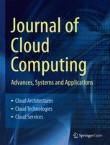Journal of Cloud Computing welcomes submissions to the thematic series entitled "Fog/Edge computing for emotion analysis"
Fog and edge computing are promising paradigms for real time systems. The basic idea is to leverage a multitude of collaborative end devices and near-user infrastructures to carry out a substantial amount of computation, storage, and communication tasks, offering for low latency, energy efficient, and agile computation augmenting services. Fog/Edge naturally bridges the Internet of Things (IoT) with the existing internet computing infrastructure.
Fog/Edge Computing is expected to play an essential role in the field of emotion analysis supporting, for example, emotional behavior recognition systems, IoT for emotional behavior recognition, and so on. It has introduced a family of powerful methods that can help to solve the security and privacy problem in some IoT based emotion analysis systems. However, there are still challenges in these systems to be solved, such as scale and complexity, security criticality, dynamicity, and fault diagnosis and tolerance. Inspired by the challenges and the chances, more and more people are devoting efforts to this research direction. As such, the combination of Fog/Edge with emotion anaysis has quickly garnered much attention from both industry and academia.
This thematic series mainly introduces the clinical application of Fog/Edge, addressing classification, clustering, regression, and other methods of emotion analysis. Papers in the series will review the new progress and achievements of Fog/Edge technology in the field of Emotion Analysis in the past ten years.
We invite original research articles, with an emphasis on deep learning paradigms in real-time IoT-edge computing applications, as well as review articles that will stimulate further activities in this area and improve our understanding of the key scientific problems. Topics may include, but are not limited to:
• Fog/Edge in medical image analysis
• Fog/Edge in mobile emotion analysis systems
• Mobile emotion analysis systems using fog/edge
• Emotion analysis in social media using fog/edge
• IoT of emotion analysis using fog/edge
• Emotion analysis equipment system using fog/edge
• Fog/edge encoding/decoding/processing of emotions
• Fog/edge content distribution of emotion analysis
• Resource allocation in emotion analysis with fog/edge systems
• Security and privacy in emotion analysis with fog/edge systems
• Fog/edge support for real-time emotion analysis
• Emotion analysis services and applications with fog/edge
Submission instructions
Before submitting your manuscript, please ensure you have carefully read the submission guidelines for Journal of Cloud Computing. The complete manuscript should be submitted through the Journal of Cloud Computing submission system. To ensure that you submit to the correct thematic series please select the appropriate special issue in the drop-down menu upon submission. All submissions will undergo rigorous peer review and accepted articles will be published within the journal as a collection.
Submission deadline: 31 March 2020
Lead guest editor:
Kaijian Xia, China University of Mining Technology, China
Guest editors:
Yizhang Jiang, Jiangnan University, China
Wen Si, University of South Florida, USA
Submissions will also benefit from the usual advantages of open access publication:
- Rapid publication: Online submission, electronic peer review and production make the process of publishing your article simple and efficient
- High visibility and international readership in your field: Open access publication ensures high visibility and maximum exposure for your work - anyone with online access can read your article
- No space constraints: Publishing online means unlimited space for figures, extensive data and video footage
- Authors retain copyright, licensing the article under a Creative Commons license: articles can be freely redistributed and reused as long as the article is correctly attributed.
